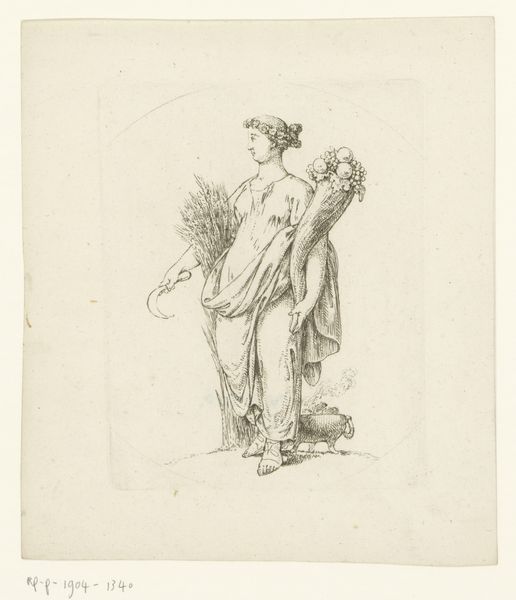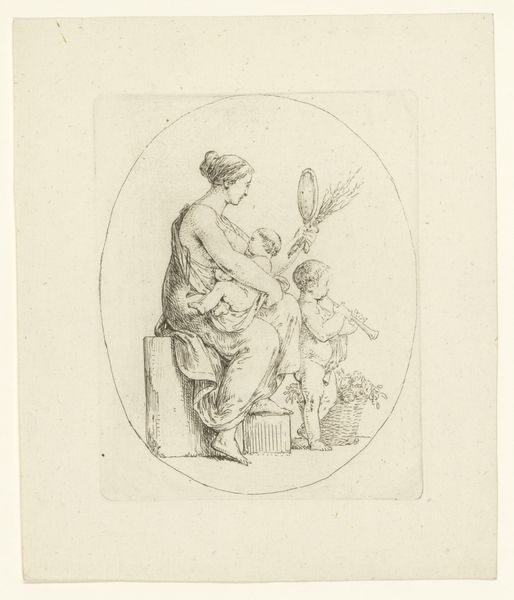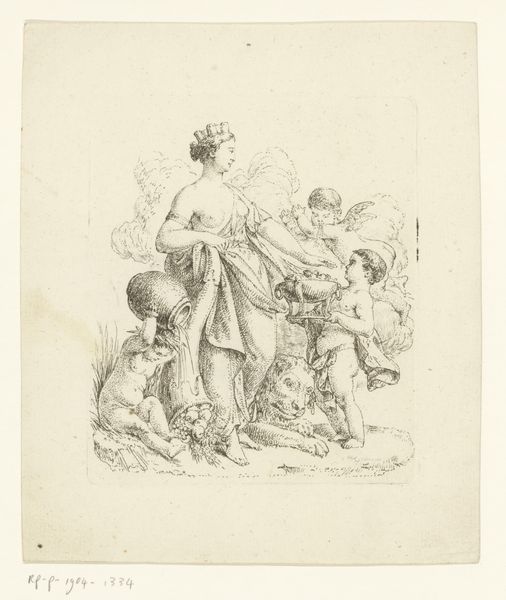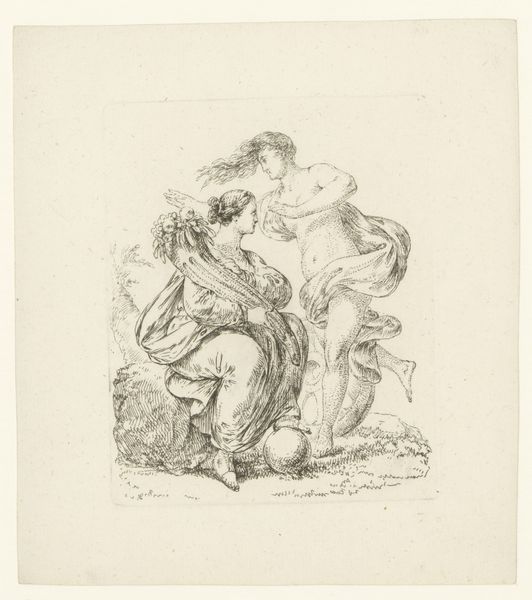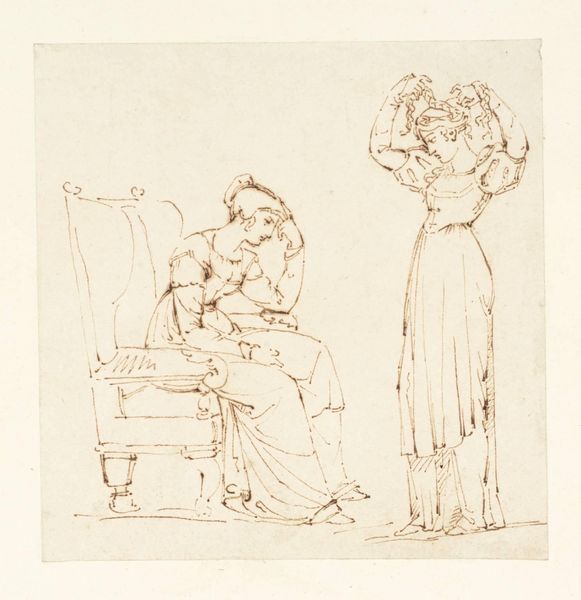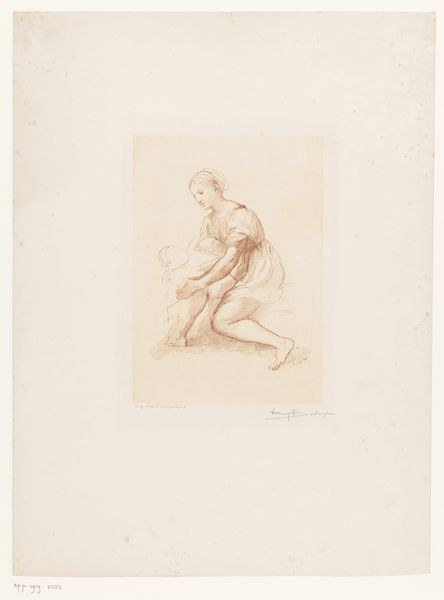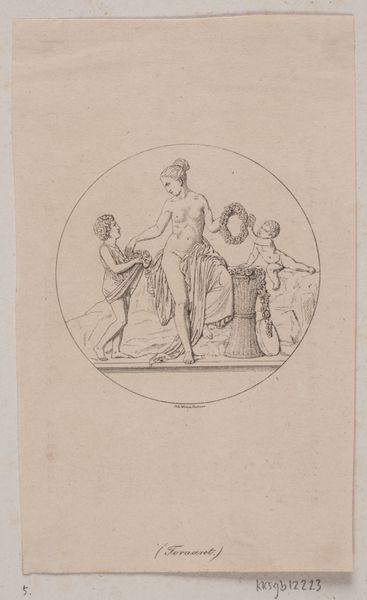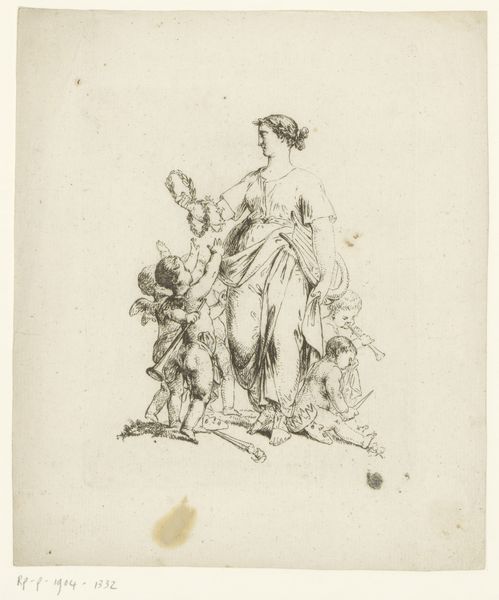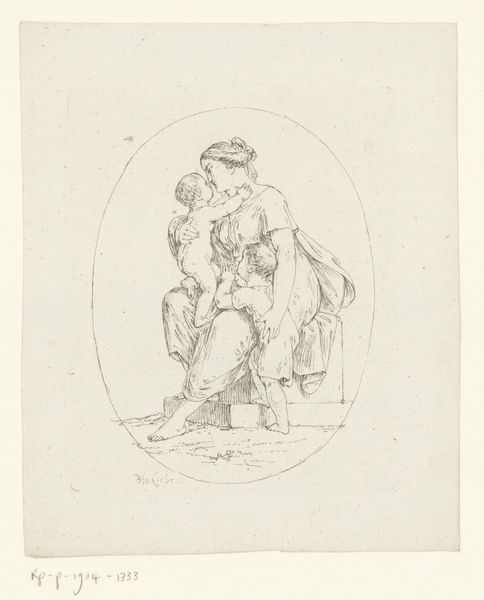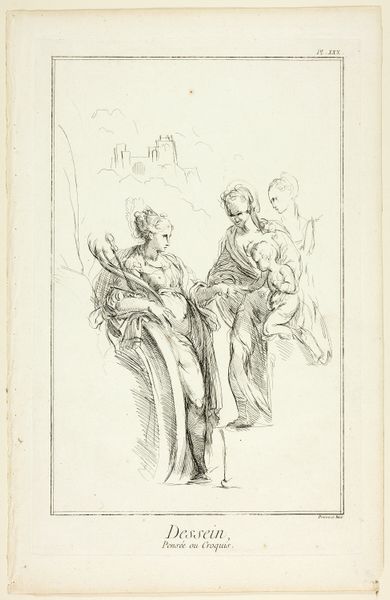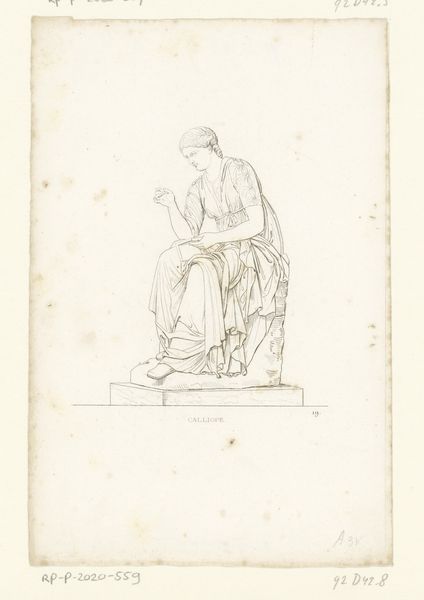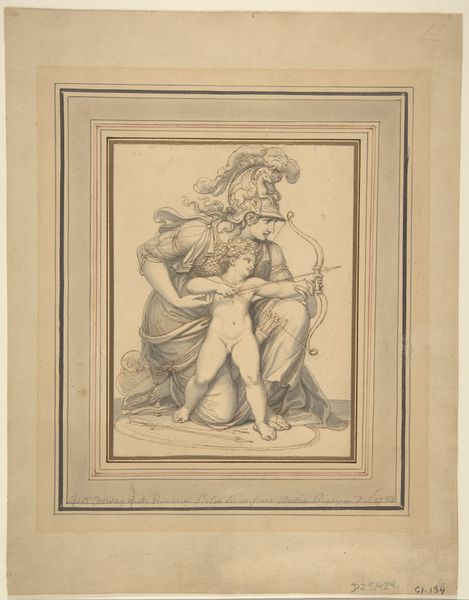
print, etching, engraving
#
neoclacissism
#
allegory
# print
#
etching
#
figuration
#
line
#
history-painting
#
academic-art
#
engraving
Dimensions: height 140 mm, width 115 mm
Copyright: Rijks Museum: Open Domain
Christian Bernhard Rode created this allegory of freedom as an etching. Rode worked in Germany during a period of social upheaval and intellectual ferment, known as the Enlightenment. This image presents a Neoclassical ideal of freedom, reminiscent of ancient Greek and Roman symbolism. We see two figures, one holding a staff with a pileus, or freedman's cap, on top. The bare feet and simple robes suggest naturalness and virtue. The image’s visual codes would have resonated with the cultural values of the time: reason, liberty, and civic virtue. It is interesting to see how the classical vocabulary is appropriated and re-coded to comment on contemporary debates. Perhaps the image even subtly critiques the opulence and artificiality of aristocratic culture, as revolutionary sentiment spread across Europe and North America. To better understand this work, we can consult historical records and essays from the period, along with books on the history of political thought and of the artistic academy in Germany. Ultimately, understanding art means situating it in its historical context, recognizing it as the product of a specific time and place.
Comments
No comments
Be the first to comment and join the conversation on the ultimate creative platform.
